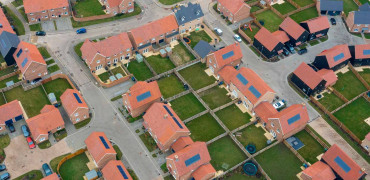It’s tempting to think that there is no such thing as a bad idea when it comes to ways to achieve the numbers of homes we need to satisfy the ever-increasing demand across the UK.
By that logic, ways of reusing existing buildings such as commercial buildings for residential use needs to be a key priority for developers alongside new build, with the difficulties that presents in terms of site acquisition.
However, the results of permitted development (PD), particularly transforming hollowed out retail and office buildings in town centres into homes, has been something of a curate’s egg according to most reports.
The good bit is that since that visionary Minister Eric Pickles freed up planning to allow such conversions to happen quickly, back in 2013, around 100,000 units have been delivered.
On the flipside, some of the conversions have been failures, with the worst described using terms like “human warehousing,” with zero amenities and poor quality accommodation.
49% of homeowners had no idea what the Government’s sustainability targets were
80% of buildings
With many PD conversions having been undertaken, it’s arguable that for a variety of reasons, but chiefly the climate agenda, more focus needs to urgently be put on upgrading our existing housing stock.
This means both the Government in the form of national incentives, and the wider construction industry doing what it can in the meantime.
The Climate Change Committee has said that the Government’s 2021 Heat and Buildings Strategy doesn’t go anywhere close to providing a full set of proposals for tackling our existing home retrofit challenges.
It’s now widely understood that 80% of existing buildings will still be existing in 2050 (‘year zero’ for net zero carbon).
They will need energy retrofit (largely insulation upgrades) before they can be fitted with the renewable technologies that will take them down to the magic zero.
The Government’s Environmental Audit Committee recently called on the industry to rethink the default setting of new build over reusing and refurbishing existing buildings.
No to demolition
Conservative MP Philip Dunne, EAC chair, said that demolition isn’t the answer, with the “significant amount of locked-in carbon” in buildings “wasted each time they get knocked down.” He added: “Ministers must address this urgently,” but didn’t quite explain what that meant.
This follows a 2021 plea by RIBA to move from a bias towards new build to one of reuse, as part of its 2030 Climate Challenge strategy.
This is paradoxical, you might expect architects to vote for the creation of impressive new structures of their own – however that actually gives the statement more credibility.
The climate crisis has brought the need to prioritise reusing everything appropriate to the forefront, and buildings are one of the most obvious examples of where this can happen.
With the built environment being blamed for 25% of greenhouse gases, it’s also one of the areas where the biggest impact can be made.
Reuse, reuse, reuse
Reuse isn’t the panacea; refurbishments must be done as rigorously as possible.
Yet the Building Regulations framework on refurbs is somewhat opaque, only explicitly applying to additions to those existing buildings, and not to restored original parts.
The much–reported upgrades to Parts L and F largely apply to new construction, for example, apart from aspects like U-values of new glazing introduced to existing buildings.
Sustainability targets? – No idea
One developer, Redrow, has clearly cottoned on to the fact that there is a lot of focus being put on the need to tackle our existing buildings, potentially at the expense of new build.
They have surveyed homeowners (existing and first timers), and this has produced a finding that they believe it’s “more cost effective to move into a new-build home, rather than retrofit an older property to modern energy efficiency standards.”
However, it’s not exactly scientific, or conclusive, and only 30% actually believed that new build would be more cost-effective (versus 19% thinking that refurb would be).
More of a revelation was that 49% had no idea what the Government’s sustainability targets were, or how they impacted homeowners and their homes.
A house every hour
At the same time, another forward-thinking developer, TopHat, is putting its weight behind offsite timber construction instead.
It’s planning to build Europe's largest (650,000 sq ft) modular housing factory in Corby, Northamptonshire, with the bold promise to build ‘one house per hour’ by the end of 2023.
This, while needing new build sites, would be a huge step towards delivering the numbers that are needed, if they can find the sites.
Perhaps now is not the time for an ideological debate about new build versus retrofit, given the huge challenge of net zero.
It’s a phrase you don’t often hear at the moment, but when it comes to these innovative ideas for creating the homes we need, in principle at least, ‘it’s all good.’ Or maybe, if that’s too strong, ‘every little helps.’
James Parker is editor of Housebuilder & Developer




